Abdoulaye Diallo better known as Le Berger de L’ile de Ngor didn’t plan to become an artist but has over the years produced provocative works from the notable red house on the Senegalese Ngor Island. Marie Helene Ngom attempts to peel back the layers on the enigma that is The Shepherd of Ngor Island.
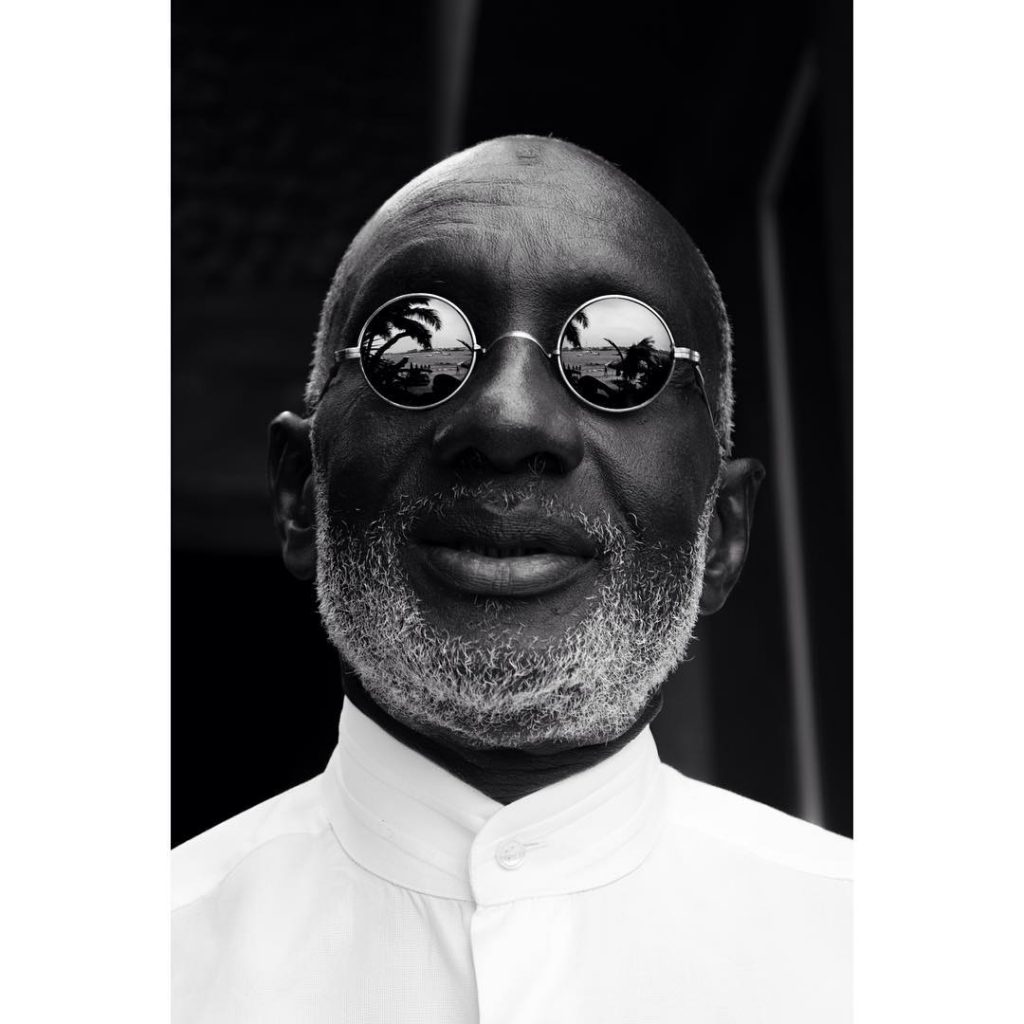
My conversation with the 67-year old painter, Abdoulaye Diallo – Le Berger L’île de Ngor, involved a lot of me listening and trying to keep up with his longwinded responses to the questions I asked. Referencing history, culture, nature, women, and even mathematics, his answers were often long-drawn-out, ending with a summarising “Et c’est ça ” – and that’s that. But as I rounded off the interview, I asked that he complete a simple statement, “I paint because…”. He paused, eyes darting as he stroked his white hipster beard, before settling his gaze on me, and with a small grin responded, “…I play”. This response, the simplest of all the answers he had given during our time together, is an accurate depiction of his enjoyable approach to art, which understates the deep thought and consideration his paintings reflect. Contradictions like this peppered our whole afternoon together.
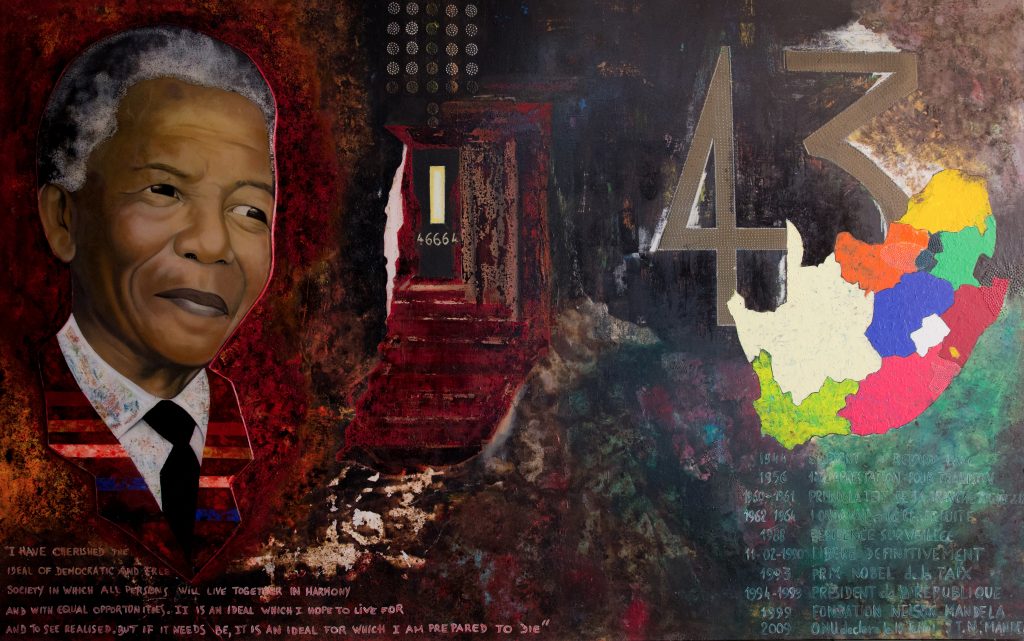
…there is a light-heartedness to his creative process, but a heavy meaning behind each canvas.
A few hours before, he had given me a tour of his gallery – the explanations of his works animated in gestures and profound words. First introducing his current work-in-progress, a 300cm by 500cm canvas laid out on the floor that he is preparing for Africa 2020 in France. This is the only art piece he is working on this year which is on the theme, ‘History of Africa and Language’. “I drew a tongue. The next day I added a baobab. And then I added a book. Tomorrow I will come back with other ideas”, he explained. As with his other works, there is a light-heartedness to his creative process, but a heavy meaning behind each canvas. He would casually transition from explaining the numerical logic behind “Un Dur Destin” a tribute to Nelson Mandela, to his admiration of legendary women, such as Miriam Makeba and Mariama Ba, in “Le Banquet des Épouses.”
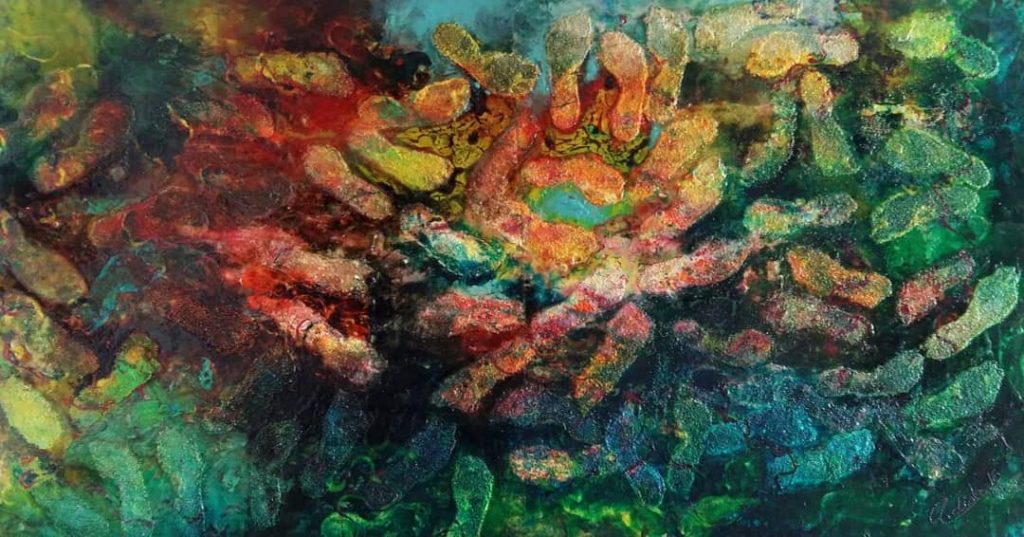
The artist’s studio sits on the face of Ngor Island, a tiny island just off Dakar’s north shore. Taking a small canoe from the coast of Dakar, it’s hard to miss the bright red house – though the large palms attempt to obscure it. From the balcony where we sat, I could hear the waves and catch glimpses of its shimmer through the palm trees, and beyond that, Dakar’s coast. The salt air mingled with the smell of fried foods from the restaurant nearby. My curiosity had brought me here. How did the engineer, Abdoulaye Diallo, become the painter, Le Berger de L’ile de Ngor at the age of 60?
Born Abdoulaye Diallo in 1952, he spent most of his career as an electrical engineer with no formal artistic training, and no calculated decision to become an artist. Yet he became one at the age of 59 through what he describes as an “evolution”. At 50, his father advised him that a man must now live for one of two things: passion or spirituality. He chose passion, instinctively gravitating toward writing because of his love for books. His third book, “La Fille du Volcan” (2011), was about Ngor Island. The presentation of his book was accompanied by a cultural and artistic festival for young artists and musicians on the Island. Inspired by the local artists, he borrowed their equipment and colours and attempted to mimic the artists’ movement, seeking only to entertain his friends. “And that’s how it all started”.
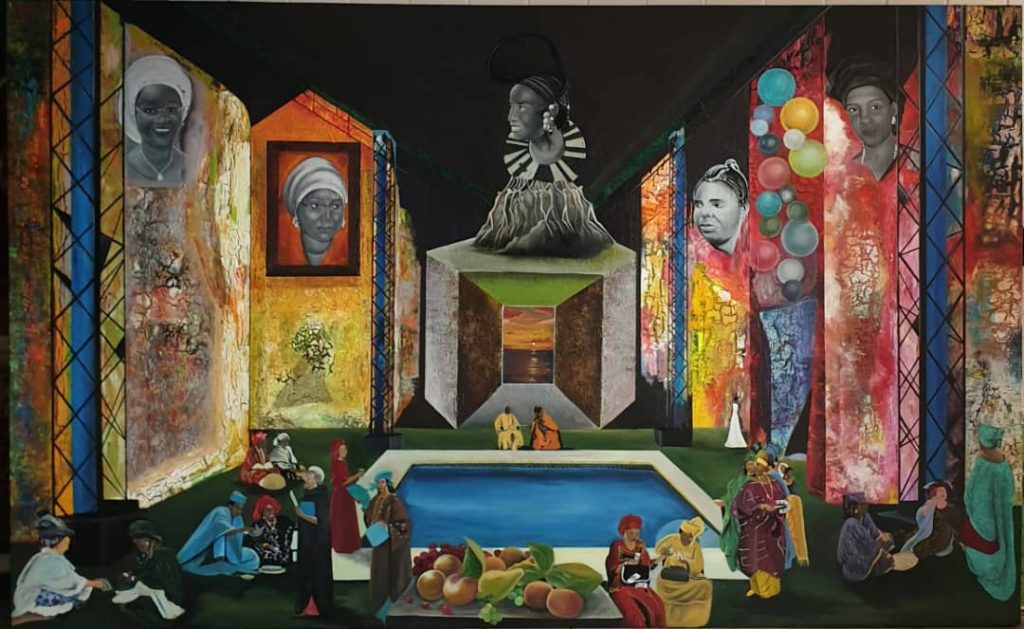
He had his first art exhibition a year later at the age of 60. An art professor who attended the exhibition and was very impressed with Diallo’s works said to him, “Your last name is Diallo. Diallo is a Peul name. The cow is present in all of your works. Then you are a Shepherd. And you live on Ngor Island. You are the president of the Association of Friends of Ngor Island (AAIN), and so by consequence, the person who is in of charge maintaining the environment and morality of the island. You are Le Berger de L’île de Ngor – The Shepherd of Ngor Island”. To this Diallo responded, “That name suits me perfectly. I am in fact Peul. I love animals. And Ngor Island is my mistress.”
The diverse range of subjects evoked in Le Berger de L’île de Ngor art, such as digitalization, religion, politics, history, and society can be explained by his love for humanity.
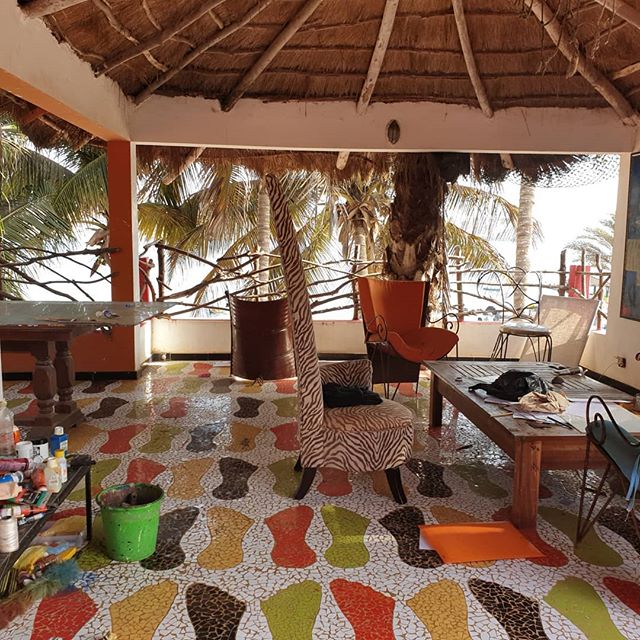
Honouring his role as Le Berger de L’île de Ngor, he lives on the island playing a big role in revamping it to become the tourist destination it is today. As the president of AAIN, Diallo created initiatives to remove pollution environmentally and morally. He successfully eradicated drug trafficking and prostitution, and has also set up a beach clean-up system, planting coconut trees, and installing public toilets. This transformation has attracted a varied group of people, locals, expats, and foreigners to the island. The coming and going of people inspires Le Berger de L’île de Ngor. In his interaction with these people, he feels that he too has travelled to experience their culture.
The diverse range of subjects evoked in his art, such as digitalization, religion, politics, history, and society can be explained by his love for humanity. At Dak’art Biennale 2018 his works relating to the theme “What humanity for the tomorrow?”, focused on the four forces that control the world: technology, globalization, climate change, and artificial intelligence. When discussing the purpose of his art he said, “I’m not interested in pleasing people. I’m interested in leaving behind art that will speak to humanity today, tomorrow, and the day after tomorrow.”
Despite the overwhelming support for his budding artistic career from his peers, the artist insists that it does not influence his work. He adds, “Very simply, I love life. Here I am on my tiny island, and I have no need to leave. For those who say what I do is interesting, yes. For me, I have found my form of freedom.”
I asked Le Berger de L’île de Ngor about a curious thing I saw him do on his Instagram page. It was a video of him walking out to the sea in his front yard and placing one of his paintings in the water. The waves softly rolled over the canvas lifting up some of its orange and green pigment before carrying it away. He then picks up his canvas and returns to his red house. It turned out that after finishing that piece of art, he was not completely satisfied with it, but did not want the responsibility to take back his work. Noticing how calm the waves were that day – every wave unique, never seeing the same ripple twice – he saw his opportunity. “To be sure I myself cannot take it back. I could not be in the place of the wave. And I could not be the force of the wave. All that came out of my work was sent where I can’t get it back.”
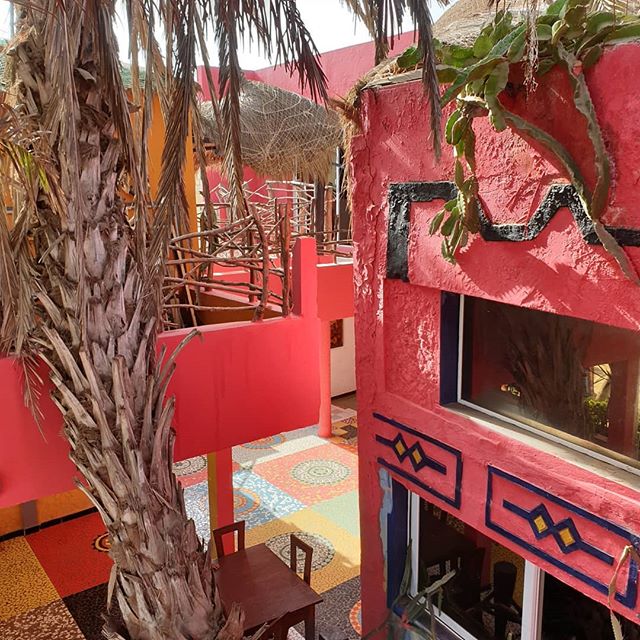
I finally figured out that he wasn’t contradicting himself. He had found his creative sweet spot on Ngor Island, where he can create art without being calculating, and yet be intentional at the same time. From his balcony work space he watches the coming and going of all kinds of people. He hears the screams of the children playing in the water, the chatter of people lounging on the beach in his front yard. The sounds of nature that change from day to night. And all he has to do is receive it.
“The source for inspiration is here. Everything is inspiring on this island,” says Le Berger de L’île de Ngor. And in a quieter tone, “If you are not ready to receive that – the charm of the environment – if you are not prepared to hear and decipher the murmur of the waters, Ngor Island will feel like Dakar, nothing more.”
–
Marie Helene Ngom is a culture journalist based in Dakar, Senegal. Her writings explore art, literature, and fashion from the diaspora.




